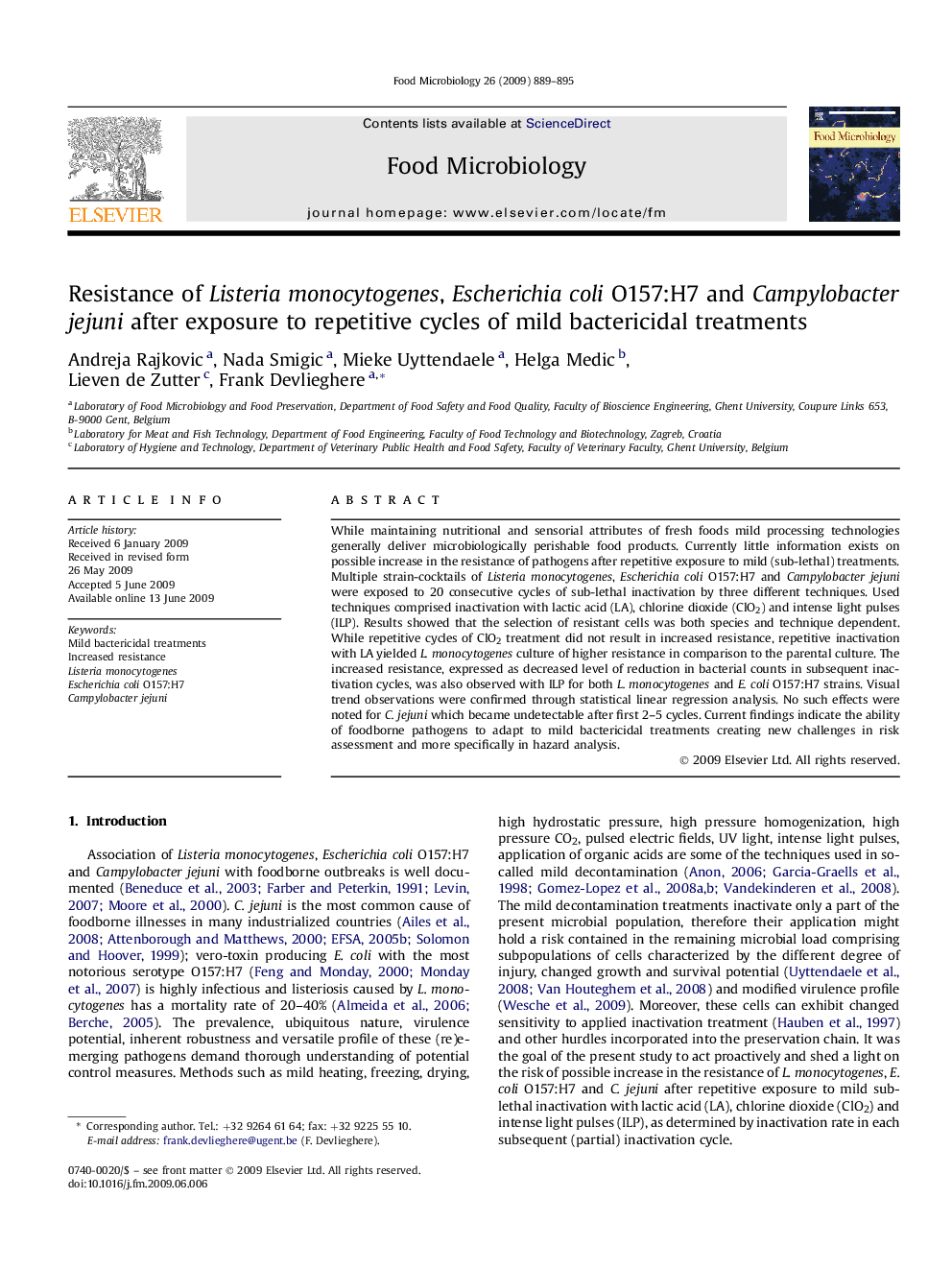| Article ID | Journal | Published Year | Pages | File Type |
|---|---|---|---|---|
| 4363502 | Food Microbiology | 2009 | 7 Pages |
While maintaining nutritional and sensorial attributes of fresh foods mild processing technologies generally deliver microbiologically perishable food products. Currently little information exists on possible increase in the resistance of pathogens after repetitive exposure to mild (sub-lethal) treatments. Multiple strain-cocktails of Listeria monocytogenes, Escherichia coli O157:H7 and Campylobacter jejuni were exposed to 20 consecutive cycles of sub-lethal inactivation by three different techniques. Used techniques comprised inactivation with lactic acid (LA), chlorine dioxide (ClO2) and intense light pulses (ILP). Results showed that the selection of resistant cells was both species and technique dependent. While repetitive cycles of ClO2 treatment did not result in increased resistance, repetitive inactivation with LA yielded L. monocytogenes culture of higher resistance in comparison to the parental culture. The increased resistance, expressed as decreased level of reduction in bacterial counts in subsequent inactivation cycles, was also observed with ILP for both L. monocytogenes and E. coli O157:H7 strains. Visual trend observations were confirmed through statistical linear regression analysis. No such effects were noted for C. jejuni which became undetectable after first 2–5 cycles. Current findings indicate the ability of foodborne pathogens to adapt to mild bactericidal treatments creating new challenges in risk assessment and more specifically in hazard analysis.
